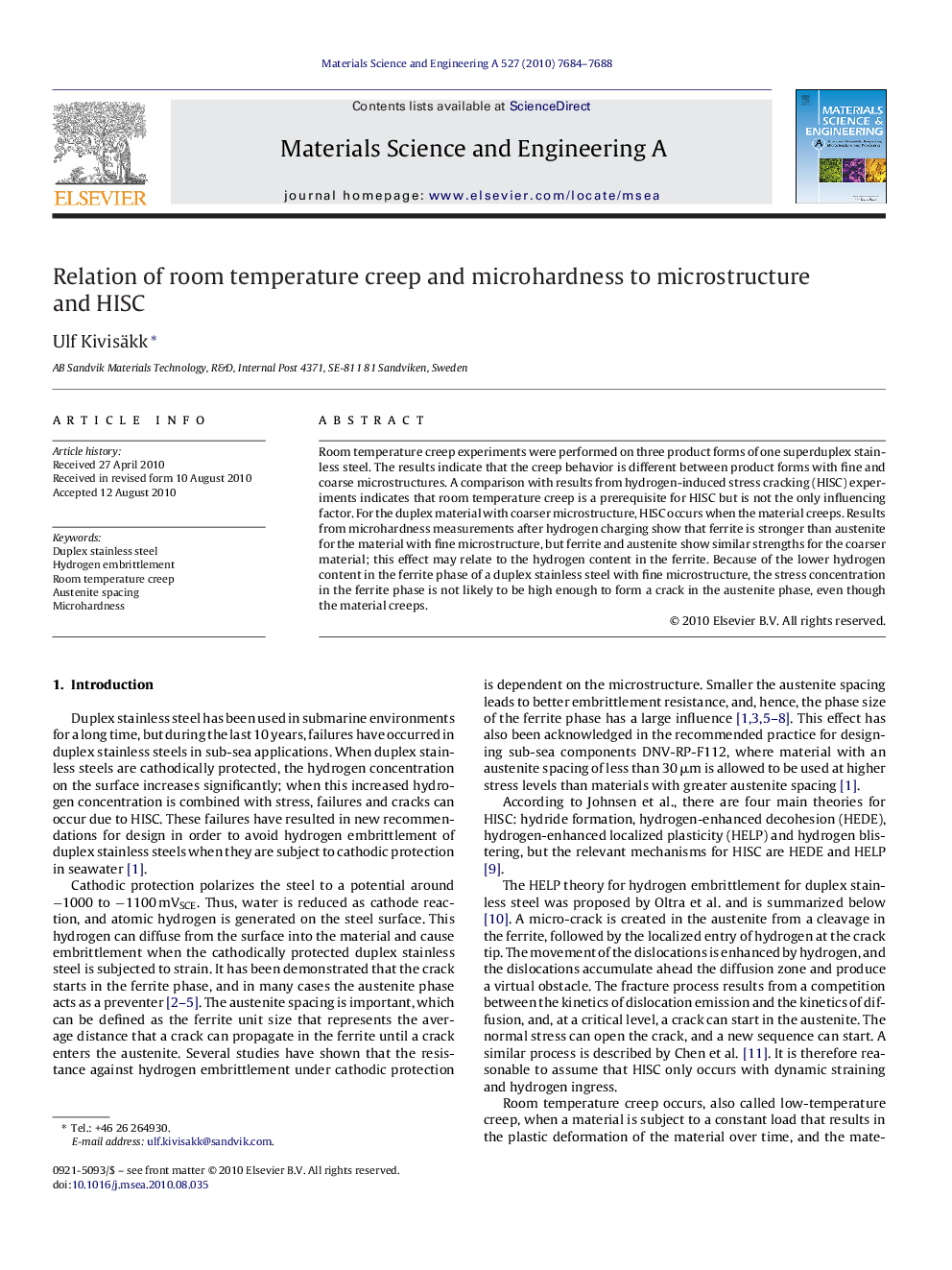| Article ID | Journal | Published Year | Pages | File Type |
|---|---|---|---|---|
| 1579140 | Materials Science and Engineering: A | 2010 | 5 Pages |
Room temperature creep experiments were performed on three product forms of one superduplex stainless steel. The results indicate that the creep behavior is different between product forms with fine and coarse microstructures. A comparison with results from hydrogen-induced stress cracking (HISC) experiments indicates that room temperature creep is a prerequisite for HISC but is not the only influencing factor. For the duplex material with coarser microstructure, HISC occurs when the material creeps. Results from microhardness measurements after hydrogen charging show that ferrite is stronger than austenite for the material with fine microstructure, but ferrite and austenite show similar strengths for the coarser material; this effect may relate to the hydrogen content in the ferrite. Because of the lower hydrogen content in the ferrite phase of a duplex stainless steel with fine microstructure, the stress concentration in the ferrite phase is not likely to be high enough to form a crack in the austenite phase, even though the material creeps.
Research highlights▶ The room temperature creep behavior is different between duplex materials with fine microstructure and coarser materials. ▶ The results indicate that straining due to room temperature creep is needed in order to promote HISC. ▶ Even if room temperature creep is present, HISC is not necessarily initiated. ▶ The reason is probably that the hydrogen uptake in the ferrite is lower for the fine microstructure than the coarser microstructure.
